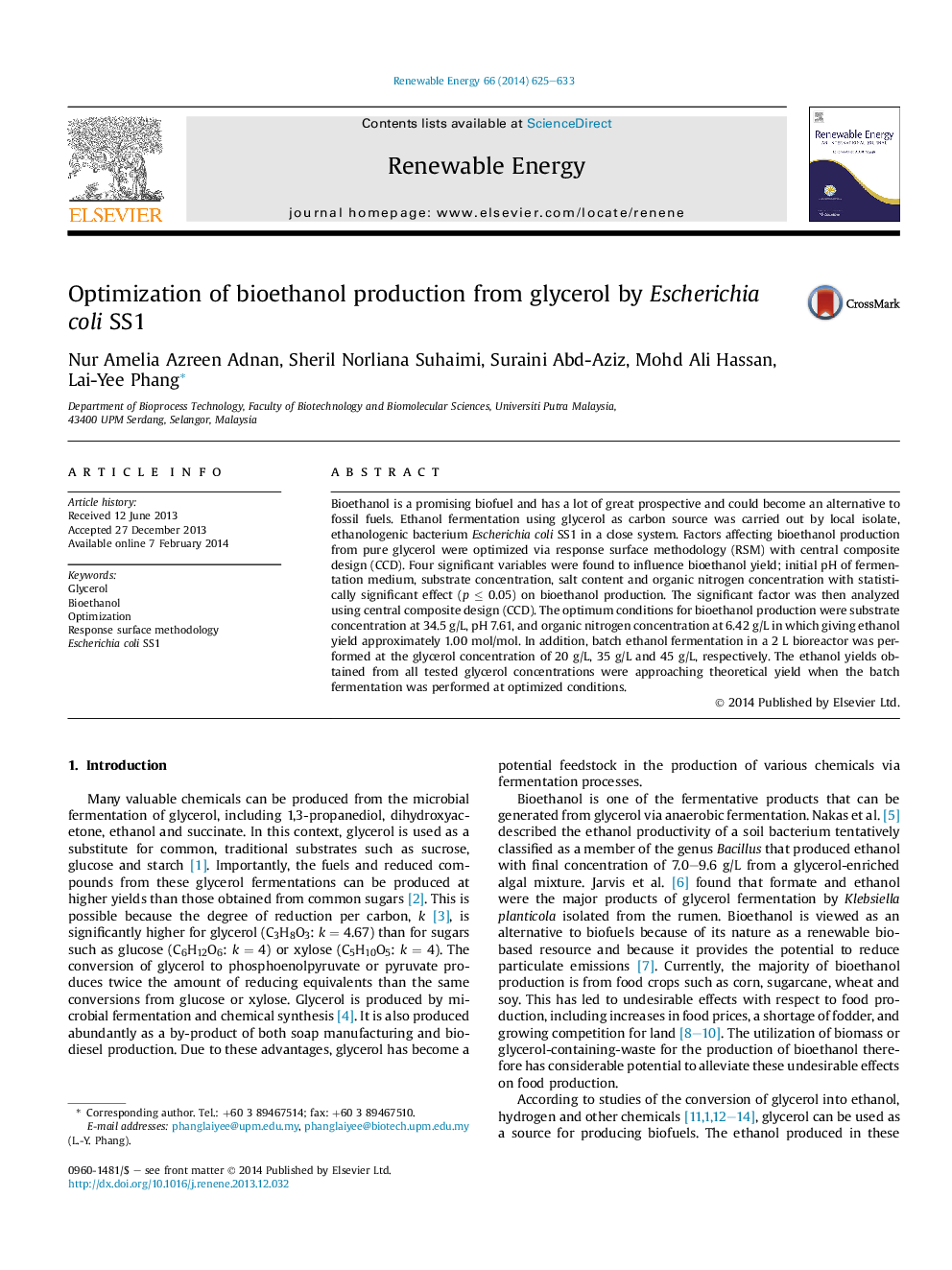| Article ID | Journal | Published Year | Pages | File Type |
|---|---|---|---|---|
| 6768818 | Renewable Energy | 2014 | 9 Pages |
Abstract
Bioethanol is a promising biofuel and has a lot of great prospective and could become an alternative to fossil fuels. Ethanol fermentation using glycerol as carbon source was carried out by local isolate, ethanologenic bacterium Escherichia coli SS1 in a close system. Factors affecting bioethanol production from pure glycerol were optimized via response surface methodology (RSM) with central composite design (CCD). Four significant variables were found to influence bioethanol yield; initial pH of fermentation medium, substrate concentration, salt content and organic nitrogen concentration with statistically significant effect (p â¤Â 0.05) on bioethanol production. The significant factor was then analyzed using central composite design (CCD). The optimum conditions for bioethanol production were substrate concentration at 34.5 g/L, pH 7.61, and organic nitrogen concentration at 6.42 g/L in which giving ethanol yield approximately 1.00 mol/mol. In addition, batch ethanol fermentation in a 2 L bioreactor was performed at the glycerol concentration of 20 g/L, 35 g/L and 45 g/L, respectively. The ethanol yields obtained from all tested glycerol concentrations were approaching theoretical yield when the batch fermentation was performed at optimized conditions.
Related Topics
Physical Sciences and Engineering
Energy
Renewable Energy, Sustainability and the Environment
Authors
Nur Amelia Azreen Adnan, Sheril Norliana Suhaimi, Suraini Abd-Aziz, Mohd Ali Hassan, Lai-Yee Phang,
